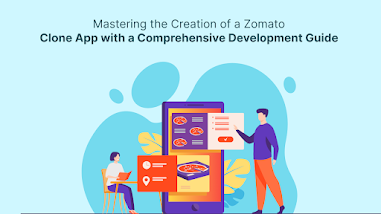In today’s fast-paced world, convenience is king, and food delivery services have become an essential part of our daily lives. With the rise of apps like DoorDash, Uber Eats, and Grubhub, customers now expect quick and easy access to their favorite meals. For aspiring entrepreneurs looking to tap into this booming market, developing a food delivery app can be a lucrative venture. One of the most effective ways to enter this space is by leveraging a DoorDash clone script.
Understanding the DoorDash Clone Script
A DoorDash clone script is a ready-made solution that mimics the functionality of the popular food delivery app. It allows businesses to create their own food delivery platform quickly and at a fraction of the cost of developing an app from scratch. These scripts come packed with essential features that are already tried and tested, which means entrepreneurs can focus on branding and marketing rather than getting bogged down in development.
Key Features of a DoorDash Clone Script
User-Friendly Interface: A successful food delivery app needs an intuitive and easy-to-navigate interface. A good clone script will include a polished design that enhances user experience, allowing customers to browse menus, place orders, and track deliveries effortlessly.
Real-Time Tracking: One of the most sought-after features in food delivery apps is real-time tracking. This allows customers to see the status of their orders and the location of the delivery driver. A DoorDash clone script will typically include GPS integration, enabling users to track their food delivery in real-time.
Multiple Payment Options: A flexible payment system is crucial for customer satisfaction. The best clone scripts support multiple payment methods, including credit/debit cards, digital wallets, and cash on delivery. This variety ensures a smooth checkout process for users.
Restaurant Management System: The script should provide a robust backend system for restaurant partners to manage their menus, orders, and deliveries. This feature empowers restaurant owners to update their offerings in real time, manage inventory, and analyze sales data.
Admin Dashboard: An effective admin panel allows the app owner to oversee all aspects of the food delivery service. This includes tracking orders, managing users, and analyzing performance metrics. A comprehensive dashboard simplifies operations and enhances decision-making.
Push Notifications: Keeping customers informed is essential for retention. The clone script should include a push notification feature to update users on order status, special promotions, and new restaurant partnerships, ensuring they remain engaged with the app.
Benefits of Using a DoorDash Clone Script
Cost-Effective Solution: Developing an app from scratch can be prohibitively expensive and time-consuming. A clone script reduces initial investment and allows for faster deployment, enabling entrepreneurs to enter the market quickly.
Proven Business Model: DoorDash’s success is well-documented, and by using a clone script, businesses can adopt a proven business model. This reduces the risk associated with launching a new service.
Customization: While a clone script offers a foundation, it can be customized to fit your unique business needs. This includes branding, user experience adjustments, and additional features that cater to your target market.
Scalability: A well-developed clone script is built to handle growth. As your customer base expands, the app can be scaled to accommodate increased traffic and additional features without significant redevelopment.
Technical Support: Most reputable clone script providers offer ongoing technical support, ensuring that any issues can be quickly resolved. This support can be invaluable for new entrepreneurs who may not have a technical background.
Conclusion
The demand for on-demand food delivery services continues to rise, making it an opportune time for entrepreneurs to enter the market. By utilizing a DoorDash clone script, you can launch a feature-rich food delivery app that meets the needs of today’s consumers. With its cost-effectiveness, proven business model, and scalability, a clone script offers a powerful tool for those looking to carve out their niche in the bustling food delivery landscape. Whether you’re an established restaurant looking to expand your services or a budding entrepreneur, investing in a DoorDash clone script could be the key to your success in the food delivery industry.












